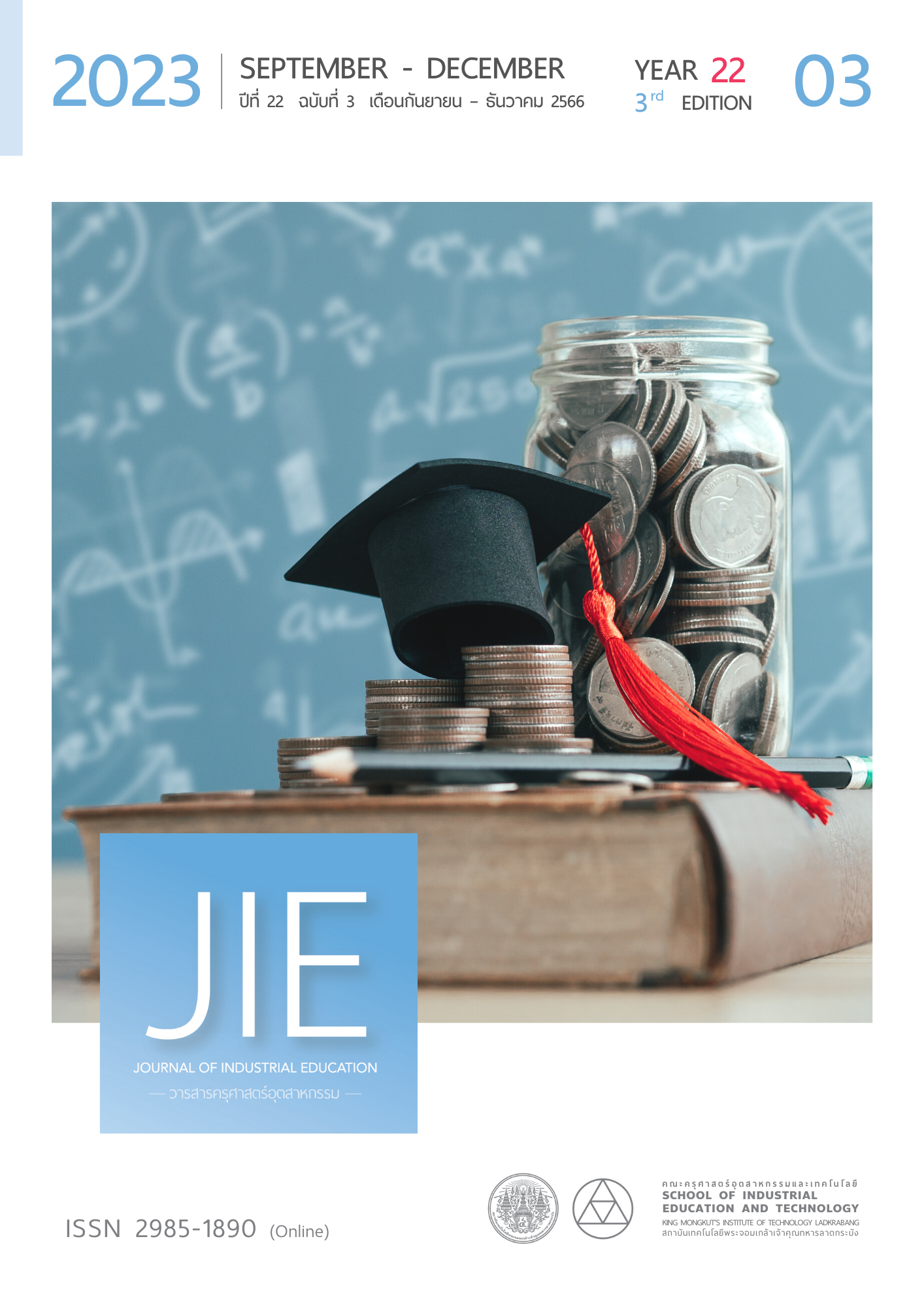PERCUSSION INSTRUMENT CERAMIC DESIGN FOR RELAXATION
Keywords:
Percussion Instrument, Relaxation, Music activities, Un-rhythmic music, Rhythm, Clay bodiesAbstract
This research, a percussion instrument, is designed with the purpose to help raise the level of relaxation music activities using instruments to accompany the extent of the body’s rhythmic sound of Carl Orff teachings. The selected sample group of 30 participants, who began to practice playing percussion instruments at the Duak Music. They were asked to identify the most suitable percussion for each body part based on the type of clay bodies and glazes fired at 1200 °C. The choice of statistics used were mean, standard deviation, and percentage. The results showed that the lip pattern is related to the reverberation, and the tone is related to the thickness of the casting, the overlapping of clay bodies, and the knocking on the bottom of the uncoated part of the product which yielded a narrow sound. As a result, the sound is clear when knocking on the metal head. There were four designs of the percussion instruments. In summary, the satisfactory level rated by experts a percussion instrument, with the fingers “type 2” was very appropriate ( = 4.00, SD = 0.97). As for hands “type 3”, it showed a very high degree of suitability (
= 3.98, SD = 1.08). As for the upper legs, the 3rd form was very appropriate (
= 4.01, SD = 0.80) and for the feet portion, the first model had a very high level of suitability (
= 3.97, SD = 0.93). Regarding the satisfaction toward simplicity among the beginner percussion, it was found that the finger part had a high level of satisfaction (
= 4.07). On the hand, there was a high level of satisfaction (
= 3.81). The upper-leg part had high level of satisfaction (
= 3.74), and the feet part had a high level of satisfaction (
= 3.79).
References
Binson, B. (2010). Music therapy (2nd ed.). Chulalongkorn University Press. (in Thai)
Boonderek, P. (2005). Music therapy. Fine and Applied Arts Journal, 1(1), 26-29. (in Thai)
Boonrod, V.,Kaenampornpan P., & Vatanasapt, P. (2018). The study of elderly’s experiences in participating music activities using bamboo bell. Journal of International Studies, (8)1, 81-106. (in Thai)
Hopkin, B. (2010). Musical instrument design (7th ed.). See Sharp Press.
Khamchu, P. (2012). Use of Carl Orff-based extra-curricular activities to develop music and drama skills of primary school [Master’s thesis]. Rajamangala University of Technology Thanyaburi. (in Thai)
Manit, S. (2014). The design of central region Thai folk ceramic percussion musical instrument. Thammasat University Journal, 33(1), 86-97. (in Thai)
Mgronline. (2018, November 27). The Department of Mental Health is concerned about 50% of the working- age city people with abnormal levels of stress. Mgronline. https://m.mgronline.com/uptodate/detail/9610000096847. (in Thai)
Ministry of Public Health, Department of Mental Health, Office of Mental Health Promotion and Development. (2015). Guidelines for using mental health tools for health workers in community hospitals (Chronic Disease Clinic) Revised Edition. n.p. (in Thai)
Nakrop, S. (2014). Ethnomusicology. Kasetsart. (in Thai)
Nakwong, T. (2004). Music education for children according to Carl Orff. Kasetsart. (in Thai)
Nakwong, T. (2005). Song of Orff-Schulwerk. Kasetsart. (in Thai)
Phonthō̜ngsathit, A., & Chaloēmnirundorn, N. (2017). Basic musical skill developtment using percussion: a case study of the second year air music students. Vannee Sooksatra (Ed), Education 5.0 for Thailand 4.0. Proceedings of The 12th RSU national graduate research conference 2017. (pp. 819-827). RUSJournals. (in Thai)
Phumdoung, S. (2005). Music therapy. Songklanagarind Medical Journal, 23(3), 185-191. (in Thai)
Positioning Editor Team. (2015, 3 July). Thai people work 51 hours a week, the highest in Asia!. https://positioningmag.com/60849. (in Thai)
Silpcharu, T. (2012). Research and analyze statistical data with SPSS and AMOS (13th ed.). Business R&d. (in Thai)
Sinwatthanāwong, C., Čhanyānon, O., & Hirunrak, S. (2016). The need of adult student in studying piano: a case study KPN music academy. Rangsit Music Journal, 11(2), 37-48. (in Thai)
Suksot, T. (2001). Industrial product design. Odeon Store. (in Thai)
World Health Organization. (2017). Promotion mental health: concepts-emerging evidence–practice summary report. Author (in Thai)
Downloads
Published
How to Cite
Issue
Section
License
Copyright (c) 2023 Journal of Industrial Education

This work is licensed under a Creative Commons Attribution-NonCommercial-NoDerivatives 4.0 International License.
"The opinions and contents including the words in papers are responsibility by the authors."
"ข้อคิดเห็น เนื้อหา รวมทั้งการใช้ภาษาในบทความถือเป็นความรับผิดชอบของผู้เขียน"



